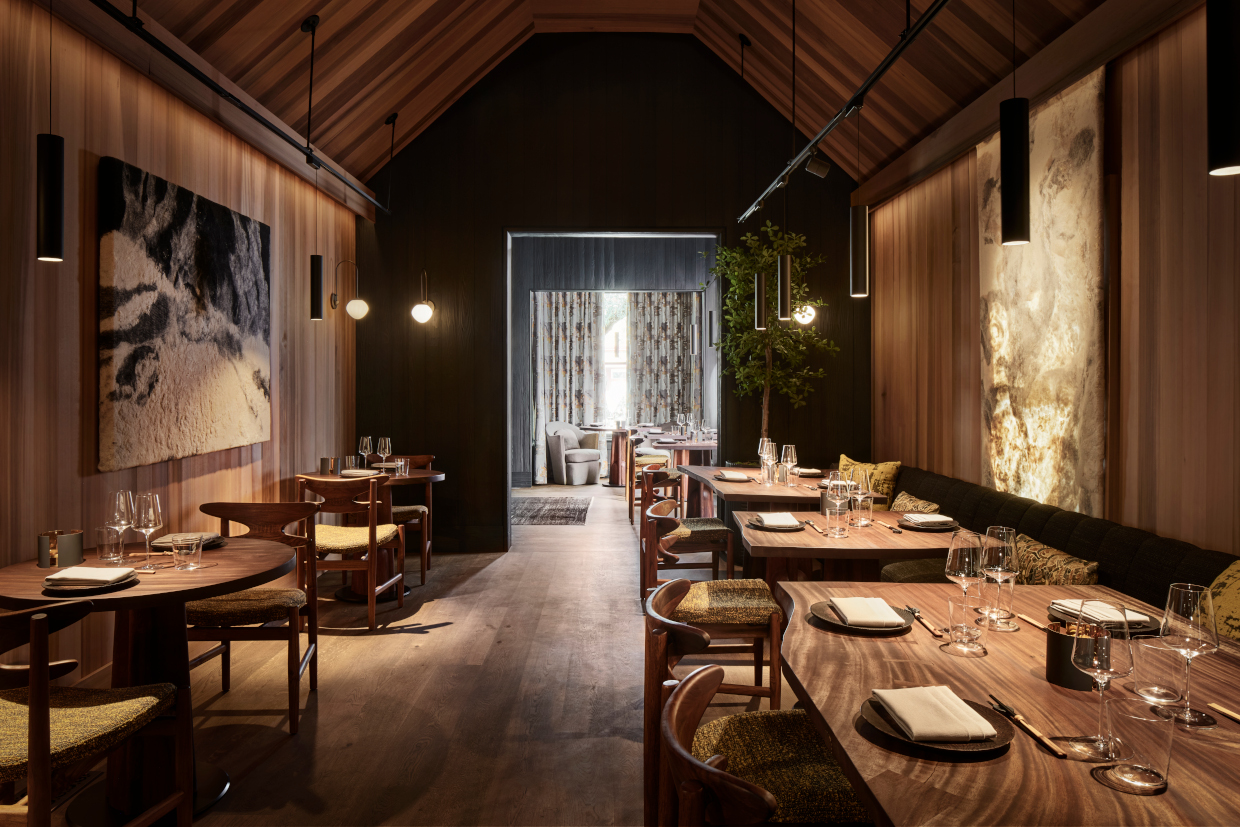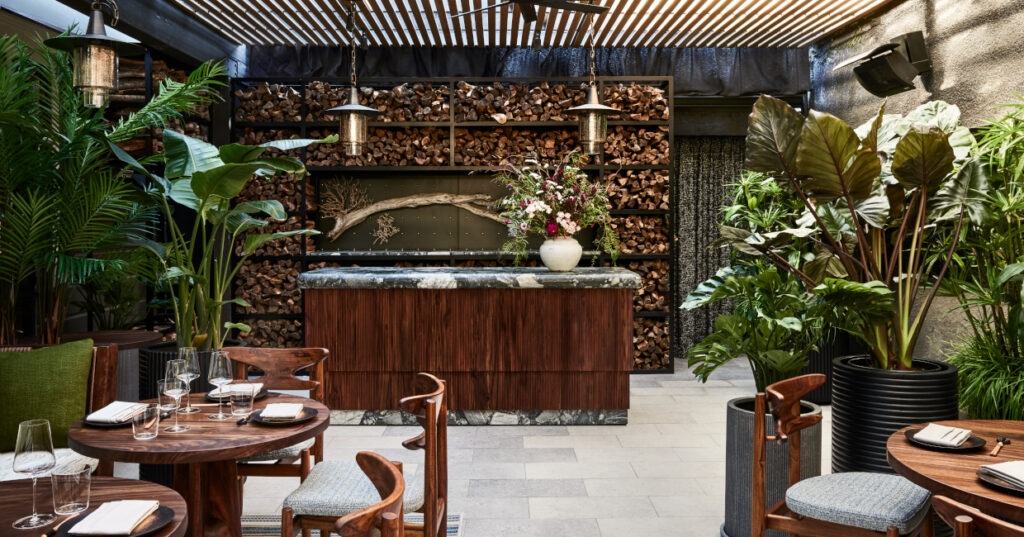In the heart of California’s wine country, a new hospitality concept is turning heads, not just for its culinary prestige, but for its immersive and exquisitely layered design. Enclos, a two-Michelin-star, one-Green-star restaurant in Sonoma, is the vision of celebrated designer Jiun Ho, who has created far more than a dining destination. Enclos is a total work of art – a seamless fusion of design, gastronomy, craftsmanship, and storytelling that redefines what it means to dine in style.
Blending Japanese restraint, Nordic clarity, and the quiet elegance of Northern California, Enclos presents a multi-sensory experience where design and cuisine unfold in unison. Inspired by Sonoma’s understated refinement – what Ho likens to the rural sophistication of Umbria – this space offers a subtle yet deeply emotional journey through architecture, art, and place.

From the outset, Enclos was never meant to be a traditional restaurant interior. Instead, Jiun Ho imagined it as a narrative in motion – a place where design elements gradually reveal themselves in rhythm with the meal. This approach borrows from the philosophy of Wabi-Sabi, embracing natural imperfection and quiet beauty. Housed in a reimagined Victorian building, the space is layered with tactile materials: charred Shou Sugi Ban wood, custom live-edge teak tables, and hand-finished details that bring warmth and authenticity to every surface.
But it is art that truly sits at the heart of Enclos. Jiun Ho personally curated and commissioned pieces that deepen the emotional resonance of the space and amplify its connection to the surrounding landscape.
One standout is an oil painting by YanTeng Xiong, a classically trained Chinese painter whose depiction of shima-aji – a favourite fish of Chef Brian Limoges – celebrates the precision and freshness of the cuisine. The fish’s signature yellow stripe becomes a symbolic thread, echoing the simplicity and honesty found in both the food and the design.
Elsewhere, two monumental wool felt panels by JG Switzer act as both sculpture and architecture. Sourced from local wool and naturally dyed, they respond to the changing light throughout the day – diffusing sunlight by day and transforming into glowing installations by night. Their hues capture the spirit of Sonoma’s redwood forests, fog banks, and soft, undulating hills.
Another deeply personal piece is a giant paper cut artwork by Tahiti Pehrson. Discovered a decade ago in a San Francisco gallery, Ho missed the chance to acquire it – only to find it years later in the client’s private collection. Its unexpected reappearance was serendipitous, aligning with the late client’s belief in life’s quiet magic. Now displayed at Enclos, the piece anchors the space with emotional weight and narrative depth.
Collaboration between Jiun Ho and Chef Brian Limoges extended beyond aesthetics and into the dining ritual itself. The dinnerware, for example, was handcrafted by Lyn Mahoon, Ho’s personal ceramicist, chosen for its tactile and visual synergy with the cuisine. Even functional design elements, such as Korean silk organza panels, carry symbolic and sensory weight – concealing doors while holding aromatic herbs to reinforce the restaurant’s farm-to-table philosophy.
The custom live-edge teak tables are more than furniture – they’re sculptural works, crafted to honour the individuality of each tree’s grain. Subtle butterfly joints and square patchwork nod to traditional craftsmanship, while also supporting the idea of layered storytelling – a theme that runs throughout the space.
Enclos, in its entirety, becomes a testament to the power of design as storytelling. It’s not just about aesthetics, nor is it purely about performance. Rather, it is a masterclass in how thoughtful, cross-disciplinary collaboration can elevate the guest experience in ways that are both intimate and unforgettable.
For the hospitality industry, Enclos is a compelling case study in immersive, narrative-driven design – where every surface, scent, sound and visual moment is intentional, refined, and deeply human. In Jiun Ho’s hands, the restaurant becomes a total work of art, and Sonoma gains a new icon of design excellence.



